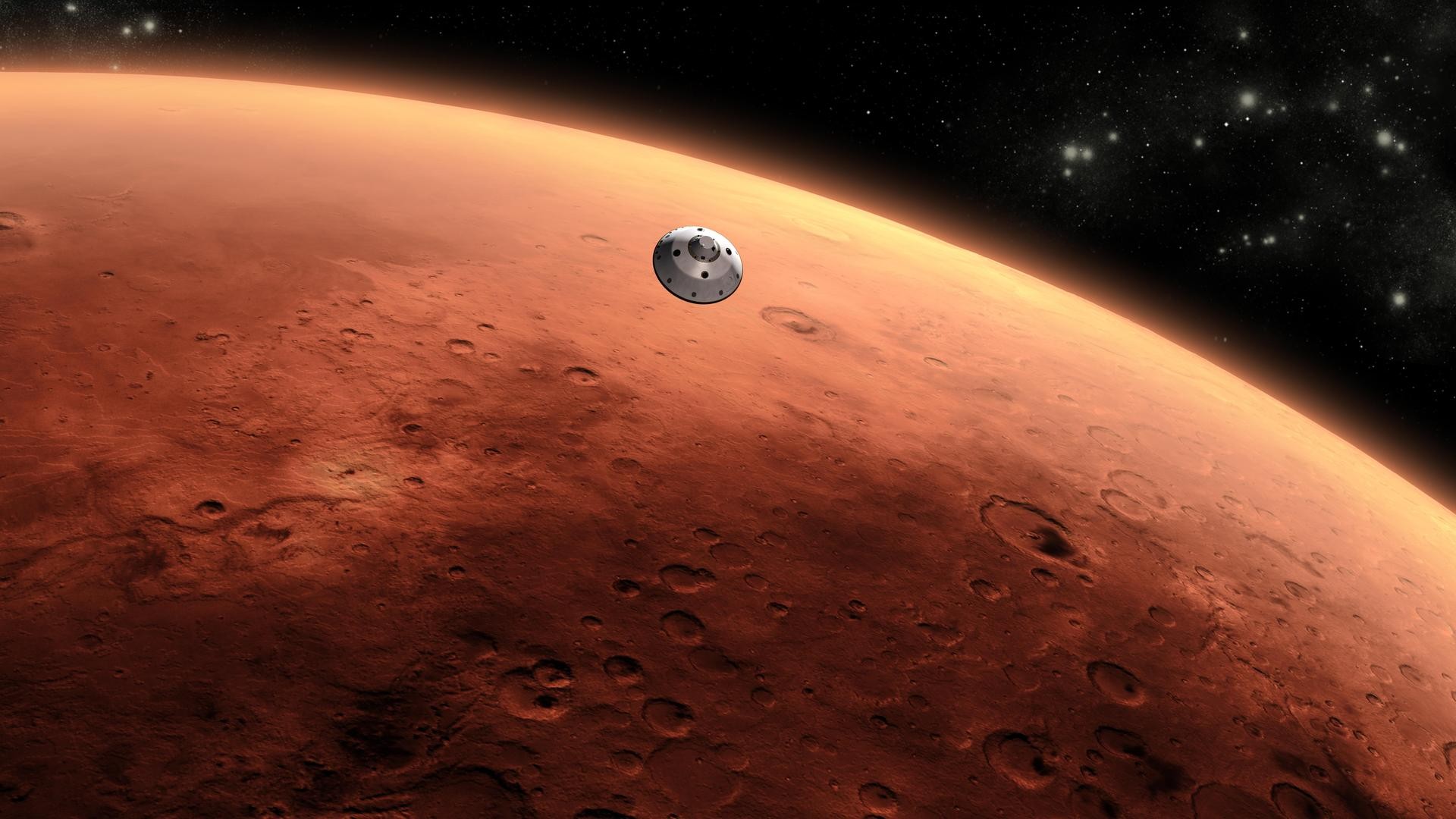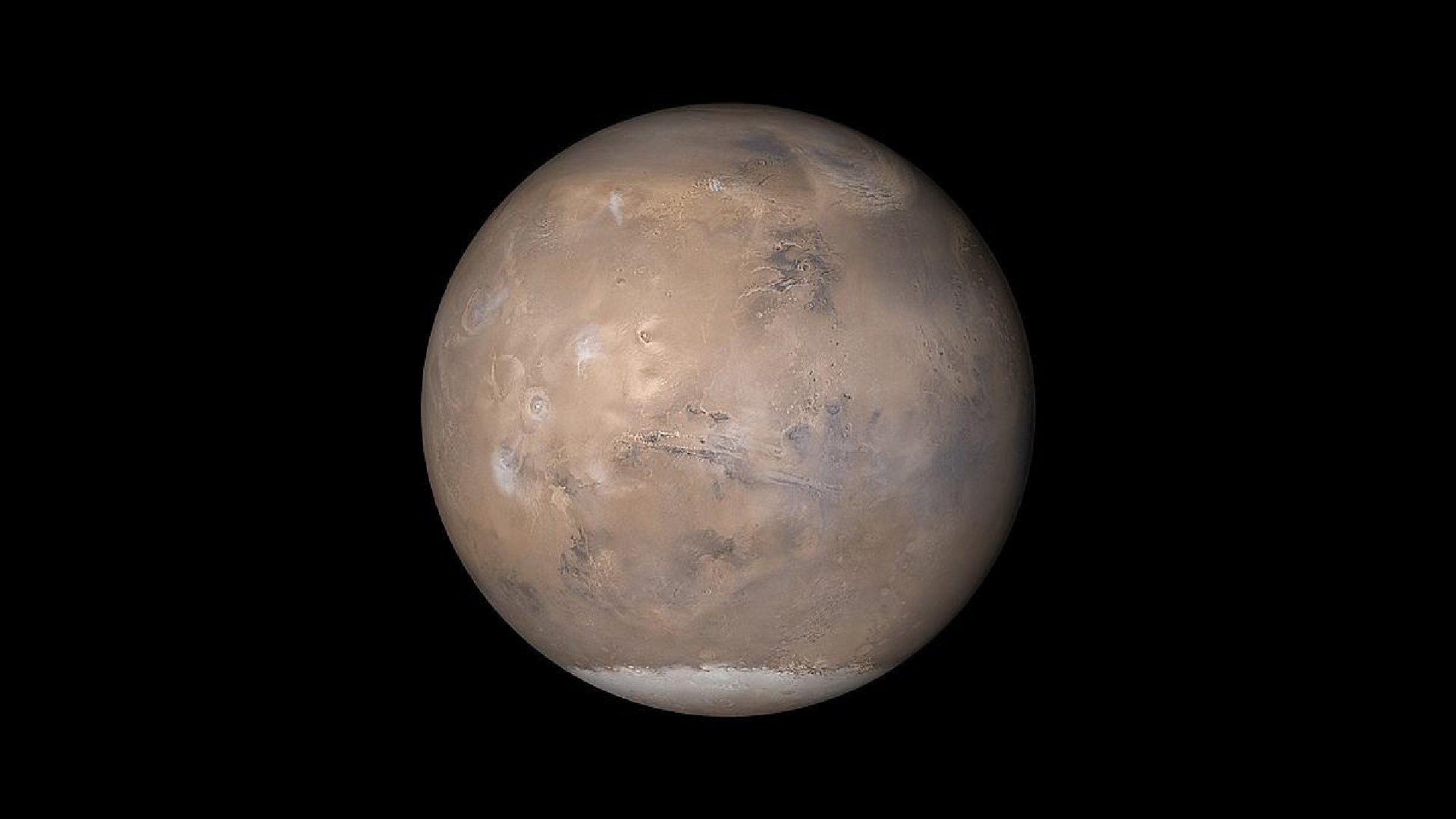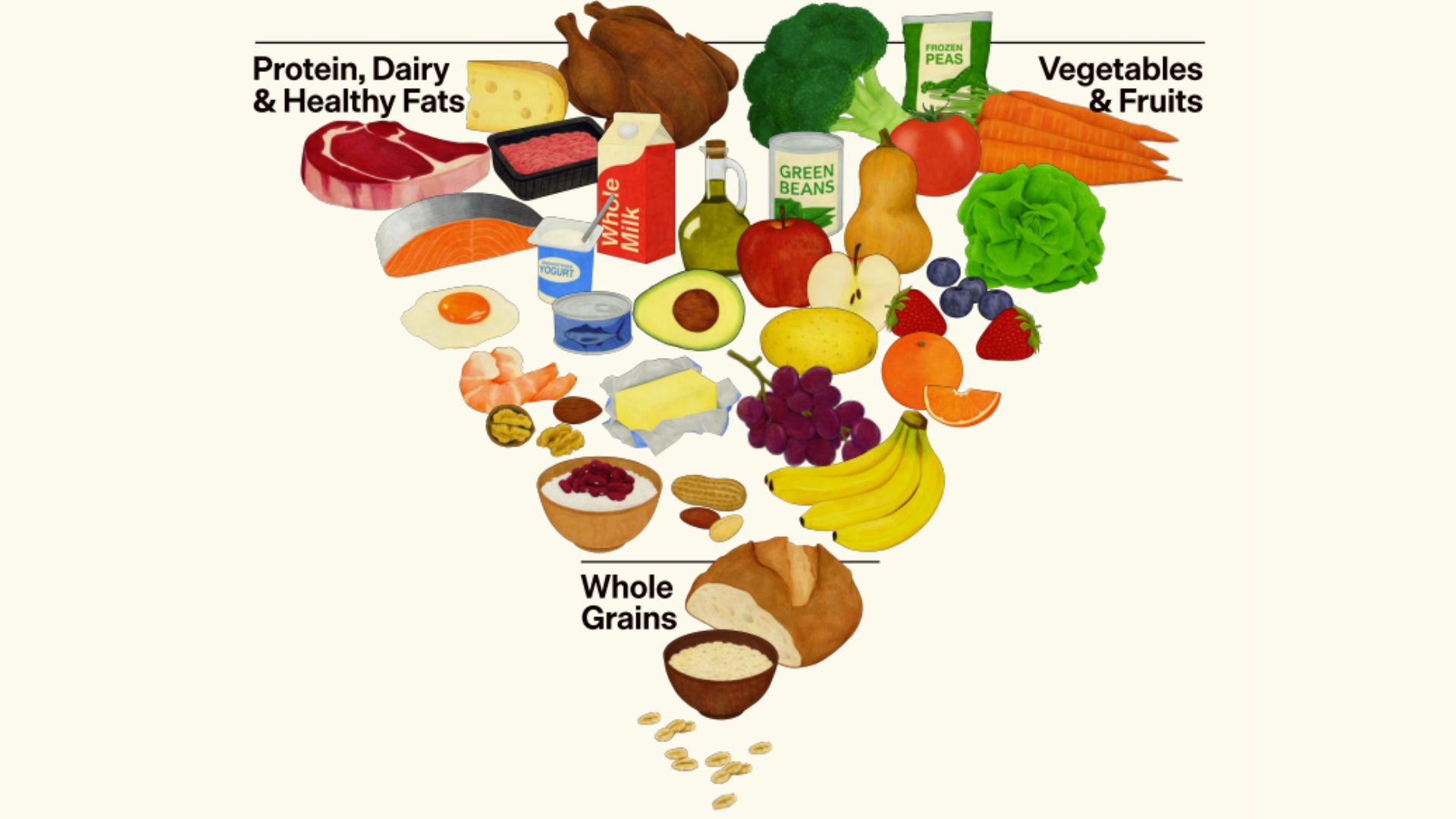Mystery of Mars' missing water could be solved by the planet's tipsy tilt
Mars has lost immense amounts of water over it lifetime, and scientists aren't sure exactly how. New research hints that the planet's violently varying tilt may be a key factor.

Tremendous tilts of Mars' rotational axis during the past 20 million years may have dried out the planet, according to a new study. The findings may help solve the mystery of how Mars, which once contained lakes, rivers and possibly oceans, lost its water.
Dry, dust-filled deserts cover much of Mars' surface today. Astronomers think most of the planet's scant water reserves are frozen within fine-grained surface dirt, with above-surface ice confined to the polar regions.
But the Red Planet hasn't always been so dry. Gullies, lake beds and valleys photographed by early NASA missions like the Viking project suggest that since Mars' birth, the planet's surface has been periodically inundated by billions of gallons of liquid water. In fact, planetary scientists have calculated that the volume of water that carved out these geological features amounted to a layer at least 300 feet (100 meters) thick over the planet's entire surface.
One hypothesis for where the water went is that much of it was "boiled" off. In a joint email to Live Science, Gabriella Gilli and Francisco González-Galindo, astronomers at the Astrophysics Institute of Andalusia in Spain and the new study's first and second authors, respectively, explained this process.
Water vapor in the Martian atmosphere — kicked high up by powerful dust storms — would have separated into atomic hydrogen and oxygen due to the sun's powerful ultraviolet radiation. A fraction of this lightweight atmospheric hydrogen would have been sufficiently energetic to escape into space.
"Given that ultimately the hydrogen in Mars' atmosphere comes from water, the escape of hydrogen atoms involves the loss of water molecules," Gilli and González-Galindo said.
Related: Mars rover captures first close-up photos of giant 'spiderwebs' on the Red Planet
Get the world’s most fascinating discoveries delivered straight to your inbox.
Measurements by NASA's ongoing Mars Atmosphere and Volatile Emission mission suggest that, at present, approximately 100 trillion trillion hydrogen atoms exit Mars' atmosphere every second. But estimates — using this present-day escape rate — of the total water Mars has lost over its 4 billion-year lifetime are, at best, only a quarter of the amount calculated to have sculpted the various geological features. In other words, most of Mars' historic water loss can't be explained by this mechanism alone.
To resolve this discrepancy, the new study's authors proposed a different idea: that Mars lost much more water when its axis of rotation was enormously tilted in the past. Today, Mars' tilt, or obliquity, is 25.2 degrees relative to its orbital plane around the sun, similar to Earth's 23.5 degrees. However, the Red Planet's tilt hasn't remained stable over the past several million years.
"The main reason is that Mars, contrary to the Earth, does not have a massive satellite (the Moon), which plays a major role in stabilizing the orbital variations of the planet," Gilli and González-Galindo said. As a result, Mars has gyrated wildly between 0 degrees and a massive 66 degrees, averaging 35 degrees.

The researchers hypothesized that as Mars tilted more, its north pole received more sunlight, which likely would have melted more ice and increased the amount of atmospheric vapor that could escape. Daniel Lo, a postdoctoral researcher at the University of Michigan who wasn't involved in the study, agreed with this reasoning, telling Live Science by email that "during intervals of increased axial tilt for Mars, global temperatures actually increased, and some of the water ice [across the planet] would sublimate into water vapour."
To test their hypothesis, the new study's authors turned to a computational simulation called the Mars Planetary Climate Model, "among the best that we currently have for the Martian atmosphere," Lo said. The team virtually changed the planet's tilt to 30 degrees and 35 degrees, and tracked the amount of hydrogen lost over a Martian year. They also evaluated the impact of dust storms using real data.
The analyses revealed that such storms increased hydrogen losses by up to 50%, depending on the storm's strength. But the real eye-opener came with the obliquity results: At a 35-degree tilt, an average of 19 more hydrogen atoms (compared to present-day values) escaped every second from Mars' atmosphere. This corresponds to a Martian yearly loss of a billion more hydrogen atoms compared with today's hydrogen losses. Gilli and González-Galindo noted that this would translate to Mars having the equivalent of a 260-foot-thick (80 m) global layer of water over its lifespan — close to the lowest geological estimate for its water content.
The findings, published May 21 in the journal Nature Astronomy, showed that changes in the planet's tilt substantially increased the amount of hydrogen — and thus water — that was lost.
"It suggests that the atmospheric thermal escape played a larger role than thought in drying the planet," Gilli and González-Galindo said. However, they noted that factors such as the planet's dust composition likely differed from present-day values and also may have influenced water loss.

Deepa Jain is a freelance science writer from Bengaluru, India. Her educational background consists of a master's degree in biology from the Indian Institute of Science, Bengaluru, and an almost-completed bachelor's degree in archaeology from the University of Leicester, UK. She enjoys writing about astronomy, the natural world and archaeology.
You must confirm your public display name before commenting
Please logout and then login again, you will then be prompted to enter your display name.


